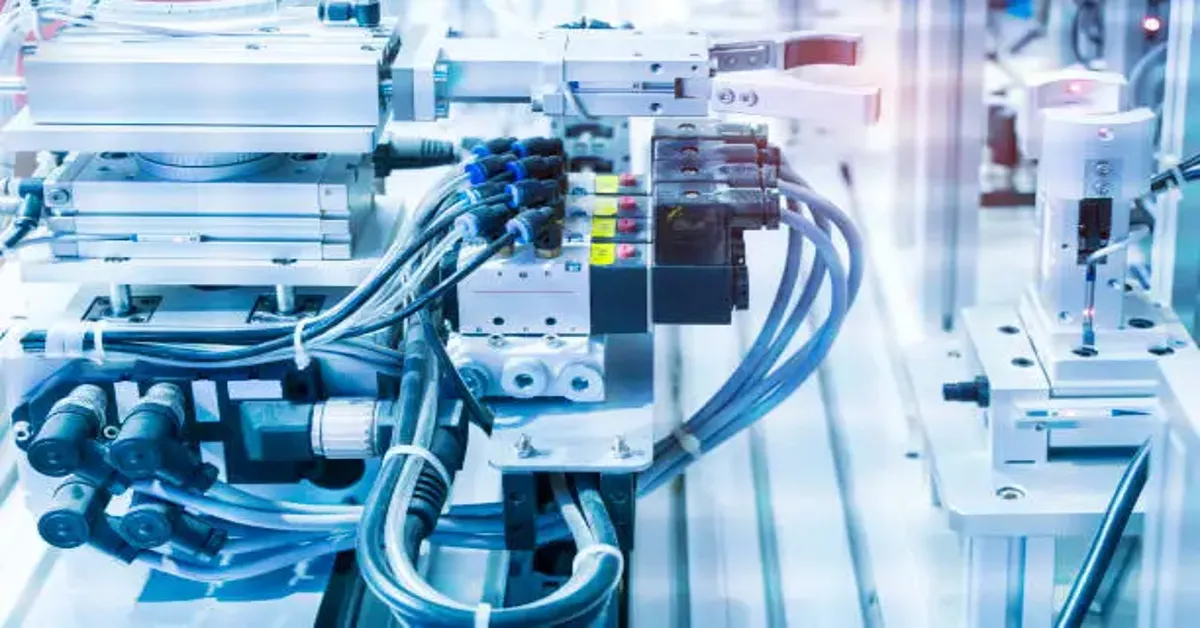1. Introduction: When Factories Have “Senses” and a “Brain”
In today’s industrial world, unplanned downtime costs companies millions in lost productivity. According to McKinsey, 43% of equipment failures lead to unexpected halts in production. Why does this happen? Often, it’s because factories lack the sensory nerves and real-time decision-making capabilities to detect issues before they escalate.
Think of sensors as the “senses” of a factory, constantly measuring temperature, vibration, and images in real-time. On the other hand, PLCs (Programmable Logic Controllers) act as the “brain,” making split-second decisions to control machinery and processes with pinpoint precision.
With the right combination of sensors and PLCs, manufacturers can optimize their processes, increase efficiency, and reduce downtime.
For example, Chipsgate PLC products are an excellent choice for industries looking to build or upgrade their factory’s intelligence.
2. Sensors: The Perception Cornerstone of Industry 4.0
Sensors are at the heart of Industry 4.0. They enable machines and systems to sense changes in the environment and react in real-time. Let’s break down some critical sensor types and their role in smart factories:
| Sensor Type | Critical Function | Industry 4.0 Impact |
| Vibration Sensor | Predictive Maintenance | Reduces unplanned downtime by 70% (Rockwell data) |
| Thermal Imager | Energy Consumption Monitoring | Cuts energy consumption by 15% |
| Vision Sensor | Defect Auto-Detection | Increases defect detection accuracy to 99.8% |
Emerging Trends in Sensors
- MEMS Technology: Micro-electromechanical systems (MEMS) are shrinking the size of sensors without compromising performance.
- Multi-Sensor Fusion: Combining data from multiple sensors enhances decision-making.
- AI Self-Calibration: Sensors are now capable of self-adjusting through AI algorithms, ensuring they remain accurate over time.
These advancements are pushing the boundaries of what’s possible in factory automation.
3. PLC Evolution: From Logic Control to Edge Intelligence
While traditional PLCs have been around for decades, Industry 4.0 PLCs are evolving rapidly. Here’s a quick comparison:
| Feature | Traditional PLC | Industry 4.0 PLC |
| Scan Cycle Time | ~10-100ms | 0.5ms (Real-time control) |
| Communication Protocols | Limited | Built-in OPC UA, MQTT (IIoT-ready) |
| Flexibility | Fixed Logic | Python scripting for advanced algorithms |
The transition from traditional PLCs to Industry 4.0 PLCs is transforming manufacturing. With faster scan times, IIoT compatibility, and the ability to run complex algorithms, these PLCs can manage far more than basic logic control. A real-world example would be optimizing a filling process using an advanced PLC to improve throughput, as seen in this case study.
4. Collaborative Operations: 4 Smart Scenarios with Sensors + PLCs
When sensors and PLCs work together, they can create powerful solutions that drive operational efficiency. Here are four smart scenarios where their collaboration shines:
- Predictive Maintenance
Vibration sensors monitor machine health, and the PLC analyzes frequency data to predict failures, such as bearing damage, weeks before it happens. This prevents costly unplanned downtime. - Energy Optimization
Current sensors monitor the energy consumption of systems like air compressors, while the PLC dynamically adjusts parameters to optimize power usage. This has led to up to 27% energy savings in real-world implementations. - Flexible Production
Vision sensors, when integrated with PLCs, can quickly reconfigure production lines. With a simple command, a production line can be reprogrammed in under 10 minutes, adapting to new products with ease. - Safety Interlocks
Laser radars, coupled with PLCs, trigger emergency stops if a safety breach occurs. In a study on industrial safety, factories utilizing these systems reported zero workplace accidents.
These scenarios demonstrate the immense potential for improving efficiency, safety, and energy consumption in modern factories by integrating sensors and PLCs.
5. Selection Guide: Avoid Pitfalls
When selecting sensors and PLCs for your smart factory, here are key considerations to keep in mind:
3 Key Rules for Sensor Selection:
- Environmental Durability:
For high-vibration environments (greater than 5G), opt for piezoelectric sensors instead of MEMS types. - Accuracy Trap:
Many sensors claim ±1% accuracy, but you should always review the full-scale error curve for more accurate measurement. - Signal Compatibility:
The 4-20mA signal remains the most reliable for industrial applications, as it is highly resistant to noise.
Core Parameters for PLC Selection:
- Scan Cycle Time:
Ensure that the PLC has a scan cycle time of ≤1ms for high-speed production lines. - Protocol Support:
Look for PLCs that support at least five different communication protocols, such as OPC UA, Profinet, and EtherCAT. - Redundancy:
For critical processes (e.g., pharmaceuticals or chemicals), select PLCs with redundant systems to avoid potential system failures.
For more information on reliable PLC solutions, check out chipsgate.com.
6. Conclusion: The Underlying Logic of Building Smart Factories
Industry 4.0 is not about replacing humans in factories but about enhancing human capabilities. Sensors extend our senses, while PLCs amplify our ability to make real-time decisions, leading to smarter and more efficient factories.
“Industry 4.0 isn’t about replacing humans, but about sensors extending our senses and PLCs amplifying our decisions.”
By integrating high-quality sensors and PLCs into your operations, you can unlock the full potential of smart manufacturing. Start your sensor-PLC integration today with rigorously tested components.

